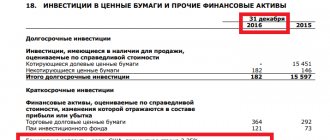Determination of the base value
The basic value on the basis of which the maximum amount of deduction is calculated is the employee’s total income remaining after deduction of personal income tax (Part 1, Article 99 of Law No. 229-FZ of October 2, 2007). Therefore, before determining the monthly amount of penalties, calculate the personal income tax on the employee’s income. When calculating this tax, the usual procedure is applied, provided for by Chapter 23 of the Tax Code of the Russian Federation, that is, the employee is provided with standard (Article 218 of the Tax Code of the Russian Federation), and in some cases, property and social tax deductions (Article 220 of the Tax Code of the Russian Federation).
Deductions based on writs of execution: to whom, when and how much
When one employee receives several enforcement documents, the accounting official must strictly follow the rule of order of deductions. For each subsequent phase, deductions can be made only after the debt for the previous one has been fully repaid. In this case, the maximum amount of deductions should not be exceeded.
- social payments made at the expense of the Social Insurance Fund (pregnancy benefits, child care benefits up to one and a half years old) or at the expense of the employer (in connection with the death of close relatives, marriage registration and the birth of a child). At the same time, temporary disability benefits (sick leave payments) are not included in this list, i.e. they may be subject to deduction in the usual manner;
- all types of compensation payments - when sending an employee on a business trip, when compensating for harm to health or when losing a breadwinner;
- amounts sent by the employer for full or partial payment of vouchers for sanitary and resort treatment of employees.
Employee income for calculating alimony
Situation: how to determine an employee’s income for calculating alimony if the organization provided him with a property deduction for personal income tax in connection with the purchase of housing?
If an employee uses the right to a property deduction, then calculate alimony taking into account the actual personal income tax withheld.
Alimony is collected from the employee’s earnings after personal income tax is withheld (Part 1, Article 99 of Law No. 229-FZ of October 2, 2007, Clause 1, Article 210 of the Tax Code of the Russian Federation). If a person uses a property tax deduction, then, depending on the size of the deduction, for a certain time his income may be completely exempt from personal income tax (clause 3 of Article 220 of the Tax Code of the Russian Federation). In such a situation, alimony must be withheld from the entire amount accrued to the employee. A similar point of view is expressed in the letter of Rostrud dated December 28, 2006 No. 2261-6-1.
An example of determining the maximum amount of alimony withheld from an employee’s income
Based on the received writ of execution, the organization recovers from the income of economist A.S. Kondratieva alimony for two children.
Kondratyev’s income for August amounted to 54,000 rubles, including: – official salary – 50,000 rubles; – monthly bonus based on work results – 3,000 rubles; – financial assistance for Kondratiev’s anniversary – 1000 rubles.
Financial assistance in the amount of up to 4000 rubles. per year is not subject to personal income tax.
By August, Kondratiev’s income, subject to personal income tax at a rate of 13 percent, exceeded the limit established by subparagraph 4 of paragraph 1 of Article 218 of the Tax Code of the Russian Federation. Therefore, the employee is not provided with a standard tax deduction.
The amount of personal income tax that is withheld from Kondratiev’s income in August is: (50,000 rubles + 3,000 rubles) × 13% = 6,890 rubles.
The basic income of an employee, on the basis of which the maximum amount of deductions is calculated, in August is equal to: 54,000 rubles. – 6890 rub. = 47,110 rub.
An example of determining the maximum amount of alimony withheld from an employee’s income. The organization provided the employee with an interest-free loan
Based on the received writ of execution, Alfa CJSC recovers from the income of manager A.S. Kondratiev alimony in the amount of 50 percent.
Kondratyev’s income for December amounted to 32,000 rubles, including: – official salary – 30,000 rubles; – monthly bonus based on work results – 1000 rubles; – financial assistance for Kondratiev’s anniversary – 1000 rubles.
On November 12, Alpha provided its employee with an interest-free loan in the amount of 50,000 rubles. for six months. The loan is not related to the purchase of housing. The agreement provides for monthly loan repayment. As the loan is repaid (on the 11th of each month), the organization’s accountant calculates personal income tax on the amount of material benefit from the interest-free loan.
Financial assistance in the amount of up to 4000 rubles. per year is not subject to personal income tax.
By December, Kondratiev’s income, subject to personal income tax at a rate of 13 percent, exceeded the limit established by subparagraph 4 of paragraph 1 of Article 218 of the Tax Code of the Russian Federation. The employee is not provided with a standard tax deduction in December.
During the period of using an interest-free loan, the employee receives material benefits in the form of savings on interest. The Alpha accountant withheld personal income tax from her. He calculated the amount of material benefit based on the refinancing rate on the date of loan repayment. The refinancing rate in December was 8.25 percent.
The amount of personal income tax that is withheld from Kondratiev’s earnings in December (excluding material benefits) is: (30,000 rubles + 1,000 rubles) × 13% = 4,030 rubles.
The amount of material benefit for December is equal to: 3/4 × 8.25% × 50,000 rubles. : 365 days × 31 days = 262.76 rub.
The personal income tax rate for income in the form of material benefits is 35 percent. The amount of personal income tax on material benefits for December is 92 rubles. (RUB 262.76 × 35%).
The employee's basic income, on the basis of which the maximum amount of deductions is calculated, in December is equal to: 32,000 rubles. – 4030 rub. – 92 rub. = 27,878 rub.
The maximum amount of deductions from Kondratiev’s income is: 27,878 rubles. × 70% = RUB 19,514.60
The Alpha accountant transferred to the budget the amount of personal income tax that was withheld from Kondratiev’s income in December in the amount of: 4,030 rubles. + 92 rub. = 4122 rub.
To pay alimony, the following is withheld from Kondratyev’s income: RUB 27,878. × 50% = 13,939 rub.
Sequence of collection
1. In the event that the amount of money collected from the debtor is insufficient to satisfy in full the requirements contained in the executive documents, the specified amount is distributed among the claimants who presented the executive documents on the day of distribution of the corresponding amount of money, in the following order: 1) satisfied first claims for the collection of alimony, compensation for harm caused to health, compensation for harm in connection with the death of the breadwinner, compensation for damage caused by a crime, as well as claims for compensation for moral damage; 2) secondly, the requirements for the payment of severance pay and wages of persons working (who worked) under an employment contract are satisfied, as well as for the payment of remuneration to the authors of the results of intellectual activity; 3) thirdly, the requirements for mandatory payments to the budget and extra-budgetary funds are satisfied; 4) fourthly, all other requirements are satisfied. 2. When distributing each sum of money collected from the debtor, the claims of each subsequent queue are satisfied after the claims of the previous queue are satisfied in full. 3. If the amount of money collected from the debtor is insufficient to satisfy the demands of one line in full, then they are satisfied in proportion to the amount due to each claimant specified in the writ of execution. 4. If the requirements contained in the executive documents are fulfilled by a bank or other credit organization, the order of debiting funds from the debtor’s accounts is determined by Article 855 of the Civil Code:
If there are funds on the account, the amount of which is sufficient to satisfy all the requirements presented to the account, these funds are written off from the account in the order of receipt of client orders and other documents for write-off (calendar priority), unless otherwise provided by law. 2. If there are insufficient funds in the account to satisfy all the requirements presented to it, funds are written off in the following order: first of all, according to executive documents providing for the transfer or issuance of funds from the account to satisfy claims for compensation for harm caused to life and health, as well as claims for alimony; secondly, according to executive documents providing for the transfer or issuance of funds for settlements for the payment of severance pay and wages with persons working or who worked under an employment agreement (contract), for the payment of remuneration to the authors of the results of intellectual activity; thirdly, according to payment documents providing for the transfer or issuance of funds for settlements of wages with persons working under an employment agreement (contract), instructions from tax authorities to write off and transfer debts for the payment of taxes and fees to the budgets of the budget system of the Russian Federation, and also instructions from the bodies monitoring the payment of insurance premiums to write off and transfer the amounts of insurance contributions to the budgets of state extra-budgetary funds; fourthly, according to executive documents providing for the satisfaction of other monetary claims; fifthly according to other payment documents in calendar order. Debiting funds from the account for claims related to one queue is carried out in the calendar order of receipt of documents.
We recommend reading: When Selling a Car for 550 Thousand, Does Interest Pay?
Deductions from the income of a convicted person
Situation: in what order should deductions be made to state income from the salary of an employee sentenced to correctional labor - before or after withholding personal income tax?
Calculate the amount of deductions from your salary before deduction of personal income tax.
The consequence of punishment in the form of correctional labor is the withholding of part of the prisoner’s salary at the main place of work to the state income in the amount established by the court verdict (Part, Article 50 of the Criminal Code of the Russian Federation, Part 2 of Article 40 of the Penal Code of the Russian Federation). Withholding can be assigned in the range from 5 to 20 percent of the salary (Part 3 of Article 50 of the Criminal Code of the Russian Federation).
Calculate deductions from the day the convicted person went to work (from the date the sentence began). This conclusion follows from paragraph 82 of the Instruction, approved by order of the Ministry of Justice of Russia dated May 20, 2009 No. 142. Withhold part of the employee’s earnings for each month worked when paying him a salary, and then transfer it to the appropriate budget (Parts 2 and 3 of Article 44 PEC RF).
Calculate the amount of deductions from the entire earnings of the convicted person without deducting personal income tax. The fact is that the provisions of Article 44 of the Criminal Executive Code of the Russian Federation require deductions from the entire amount of wages (both in cash and in kind). At the same time, the Criminal Executive Code of the Russian Federation does not contain a special clause stating that deductions must be calculated from the amount remaining after calculating personal income tax, as is done, for example, in relation to deductions under writs of execution in Article 99 of Law No. 229- dated October 2, 2007 Federal Law.
Deductions are part of the prisoner's salary. Therefore, when calculating personal income tax, include in the employee’s income the entire salary accrued to him (without deduction of deductions) (clause 1 of Article 210 of the Tax Code of the Russian Federation).
An example of how to reflect in accounting and taxation the withholding of part of the salary of an employee sentenced to correctional labor
The Alpha accountant, on the basis of a court verdict, withholds 20 percent of the monthly salary of worker A.I. Ivanov, sentenced to correctional labor. Alpha transfers the retained amount to the budget.
Alpha charges premiums for insurance against accidents and occupational diseases at a rate of 0.2 percent.
Ivanov’s salary is 30,000 rubles. Ivanov has no children, so he is not provided with standard personal income tax deductions.
The Alpha accountant withheld part of Ivanov’s salary according to a court verdict: 30,000 rubles. × 20% = 6000 rub.
The amount of personal income tax in January is: 30,000 rubles. × 13% = 3900 rub.
The following entries were made in Alpha's accounting.
January (calculation of salaries, taxes and contributions, withholding of part of the salary by court verdict):
Debit 26 Credit 70 – 30,000 rub. – Ivanov’s salary was accrued.
"Alpha" does not belong to the category of organizations that can apply reduced contribution rates for compulsory pension (social, medical) insurance. Ivanov’s income has not exceeded the contribution limit since the beginning of the year. Therefore, Alpha’s accountant assessed contributions for compulsory pension (social, medical) insurance from Ivanov’s income at a cumulative rate of 30 percent.
Debit 26 Credit 69 subaccount “Settlements with the Pension Fund” – 6600 rubles. (RUB 30,000 × 22%) – pension contributions accrued;
Debit 26 Credit 69 subaccount “Settlements with the Social Insurance Fund for social insurance contributions” – 870 rubles. (RUB 30,000 × 2.9%) – social insurance contributions are calculated;
Debit 26 Credit 69 subaccount “Settlements with FFOMS” – 1530 rubles. (RUB 30,000 × 5.1%) – contributions for health insurance to the Federal Compulsory Medical Insurance Fund are accrued;
Debit 26 Credit 69 subaccount “Settlements with the Federal Social Insurance Fund of Russia for contributions to insurance against accidents and occupational diseases” – 60 rubles. (RUB 30,000 × 0.2%) – premiums for insurance against accidents and occupational diseases have been calculated;
Debit 70 Credit 68 subaccount “Personal Income Tax Payments” – 3900 rubles. – personal income tax withheld;
Debit 70 Credit 76 subaccount “Calculations for deductions from the salary of a person sentenced to correctional labor” - 6,000 rubles. – part of the salary was withheld according to a court verdict.
February (payment of wages, transfer of deductions by court verdict to the budget):
Debit 70 Credit 50 – 20 100 rub. (30,000 rubles – 3900 rubles – 6000 rubles) – Ivanov’s salary was issued from the cash register (minus deductions);
Debit 76 subaccount “Calculations for deductions from the salary of a person sentenced to correctional labor” Credit 51 – 6000 rubles. – the amount deducted from the employee’s salary following a court verdict is transferred to state income.
Situation: is it necessary to withhold income from compensation for unused vacation in favor of the state if an employee sentenced to correctional labor is dismissed?
Answer: no, it is not necessary.
It is necessary to withhold income in favor of the state of a person sentenced to correctional labor only from the salary, and in the amount prescribed in the court verdict (Parts 1, 3 of Article 50 of the Criminal Code of the Russian Federation, Part 2 of Article 40 of the Penal Code of the Russian Federation).
And compensation for unused vacation is not salary. This is a one-time payment. Therefore, there is no reason to deduct from this compensation.
This follows from the provisions of paragraphs 2, 3 and 4 of Article 44 of the Criminal Executive Code of the Russian Federation. Such conclusions can be drawn from the letter of the Federal Penitentiary Service of Russia dated October 27, 2014 No. ref-16-50723.
An example of withholding part of the salary of an employee who is sentenced to correctional labor. Upon dismissal, he receives compensation for unused vacation
LLC "Torgovaya" is engaged in wholesale trade.
Organization manager A.S. Kondratyev was serving a sentence of correctional labor following a court verdict. According to the court decision, deductions from wages were made in the amount of 10 percent. The correctional period ended in January 2020. Immediately after completing the correctional work, Kondratyev wrote a letter of resignation. He is entitled to compensation for unused vacation in the amount of 8,330 rubles.
Kondratiev has no rights to deductions for personal income tax. Personal income tax on compensation amounted to: 8330 rubles. × 13% = 1083 rub.
The accountant did not withhold 10 percent of the compensation amount as state income.
In January, the Hermes accountant made the following entries:
Debit 44 Credit 70 – 8330 rub. – compensation for unused vacation has been accrued;
Debit 70 Credit 68 subaccount “Personal Income Tax Payments” – 1083 rubles. – personal income tax withheld;
Debit 70 Credit 50 – 7247 rub. (8330 rubles - 1083 rubles) - compensation was paid from the cash register (minus personal income tax).
When calculating income tax for January, the accountant included the entire amount of accrued compensation (RUB 8,330) in current expenses.
Sequence of collection according to enforcement documents
if they are put on file due to lack of money. Despite the fact that banks must monitor the order of payments, accountants also need to know the order of collection of money. Because they need to enter the relevant information into the “payment form”. In particular, in the payment order, to indicate the order of payment, field 21 is provided (Appendix 1 to Bank of Russia Regulation No. 383-P dated June 19, 2012).
Thus, if the claim relates to the third-priority collections, then until the demands of the previous ones (first and second-priority) are fully satisfied, the third-priority claimant will not receive anything. If the collected amount is insufficient to fully satisfy all the claims of one queue, these claims are satisfied in proportion to the amount due to each claimant. For example, the amount available to the debtor is 10,000 rubles, and the demands of one line, say for the recovery of wages, were presented by 4 claimants, 5,000 rubles each.
The order of recovery according to the writ of execution to bailiffs
1) Actual fulfillment of the requirements contained in the executive document. The bailiff, in the process of making a decision to complete enforcement proceedings, establishes the fact that the requirements specified in the enforcement document have been met: the amount to be collected has been fully paid by the debtor and this fact is confirmed by documents, that is, the bailiff is presented with a receipt for payment . In this case, a copy of the receipt must be attached to additional materials of the enforcement proceedings.
4) Sending the writ of execution to several departments of bailiffs. Enforcement proceedings are transferred from one unit of the bailiff service to another structural unit in cases provided for in Art.
The order of deductions for writs of execution from wages in 2019
- It is necessary to observe the order of deductions (presented in the table above), even if the debts under the writs of execution of the second stage are larger than those under the documents of the first stage.
- If writs of execution are submitted for deductions of the same priority (2 writs of execution for deductions of the first priority, for example), the requirements must be satisfied in proportion to the amount of the debt.
Important! If, according to writs of execution, the employee must pay amounts less than what he is willing to transfer voluntarily, the accountant should accept a statement about the need to withhold larger payments.
The order of execution of several writs of execution against one claimant
serial number of the registration record; type of executive document; date of receipt and incoming number; number of the writ of execution, when and by whom it was issued; last name, first name, patronymic and place of residence of the claimant; last name, first name, patronymic and place of residence of the debtor; name and signature of the accountant on receipt of the document; a note indicating the completion of collection on the document; notes on the return of the writ of execution - where and when it was sent, the name and signature of the employee on the return of the writ of execution.
In accordance with Art. 319 of the Civil Code of the Russian Federation, the amount of the payment made, which is insufficient to fulfill the monetary obligation in full, in the absence of another agreement, first of all pays off the creditor’s costs of obtaining fulfillment, then interest, and the remainder - the principal amount of the debt.
We recommend reading: Taxes on Non-Residents from Uzbekistan









